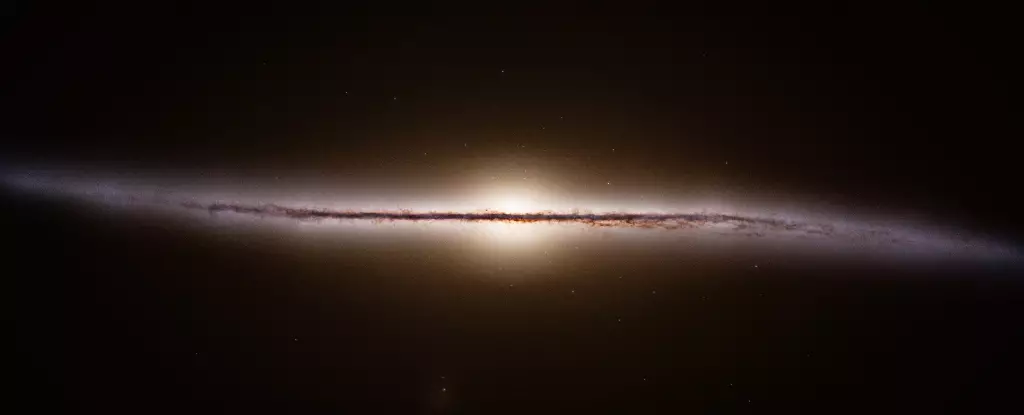The exploration of our cosmos has long been characterized by an unrelenting quest for knowledge—an endeavor to understand our place within the vast tapestry of the universe. By examining the extent to which scientific pursuits challenge and transform existing knowledge, we can assess their true merit. The European Space Agency’s (ESA) Gaia mission stands as a prime example of a transformative effort, redefining our understanding of the Milky Way galaxy. As we approach the culmination of this historic mission, the insights garnered highlight both the technological advances made and the pivotal changes in our perception of galactic structure.
Launched in 2013, Gaia was designed to construct an intricate three-dimensional map of the Milky Way, revolutionizing our conception of the galaxy. Its scope was impressive—collecting three trillion measurements across two billion celestial objects, predominantly stars, during an impressive 11-year observational campaign. Most notably, Gaia’s repeated observations have afforded astronomers a dynamic view of our galaxy, elucidating not just static positions but also the proper motion of stars, thus unraveling the kinetic evolution of the Milky Way over eons.
Understanding our galaxy’s structure has been a gradual process, evolving through decades of research and technological innovation. The mid-20th century marked a significant turning point as radio astronomy emerged as a crucial tool in the astronomer’s toolkit. Spanning back to the 1950s, this field opened windows to understanding the Milky Way’s architecture; radio telescopes could penetrate the thick cosmic dust that obscured much of our view.
In 1952, astronomers commenced the first in-depth radio survey, unveiling the spiral structure of our galaxy. Records from this period indicate that researchers began to identify hydrogen concentrations and spiral arms, revolutionizing the way we visualize our galaxy’s anatomy. Furthermore, variable stars, specifically RR Lyrae and Cepheid, provided essential distance measurements, enabling astronomers to trace the Milky Way’s configuration.
The preceding ESA mission, Hipparcos, offered the first systematic attempts at astrometry by tracking about 100,000 stars. This foundational effort provided insights into the distribution and motion of stars, yet it was Gaia that truly unlocked the mysteries of our celestial habitat. Although Hipparcos laid the groundwork, Gaia amplified and expanded upon these findings, employing refined methodologies that brought astronomical revelations to the forefront.
What makes the Gaia mission particularly remarkable is its ingenuity in overcoming spatial limitations. In a universe where our physical perspective is limited, Gaia ingeniously constructed a detailed picture of the Milky Way from an internal position, relying on advanced astrometric techniques rather than externally imposed views. Its ability to generate a comprehensive stellar census of nearly two billion stars is a monumental achievement, profoundly enriching our understanding of our galactic environment.
Gaia’s findings have also challenged previous conceptions regarding the Milky Way’s structure. New artistic impressions stemming from its vast data illustrate an intricate network of spiral arms and previously unknown galactic features. One of Gaia’s most groundbreaking discoveries is the identification of fossil arms—possible remnants of previous galactic interactions or distortions within the Milky Way’s disk. This has added rich context to our understanding of how our galaxy has evolved over billions of years.
Another compelling revelation from Gaia’s data is the realization of a slight waviness in the galactic disk—a feature that suggests gravitational interactions with neighboring smaller galaxies, like the Sagittarius Dwarf Spheroidal Galaxy. These intricacies offer an enriching narrative of the Milky Way’s complex interactions throughout its history.
Looking Forward: Unpacking the Final Data Release
As we begin to close the chapter on Gaia’s observational period, the implications of its findings continue to reverberate through the scientific community. Not only has it reshaped our view of the Milky Way, but it has also paved the way for new inquiries into galactic formation and evolution. Although Gaia’s mission is effectively concluded, its final data release, slated for the end of 2030, promises to unveil additional treasures hidden within its exhaustive records.
The Gaia mission is not merely an exercise in celestial mapping; it symbolizes our ongoing exploration of the cosmos and our relentless pursuit of knowledge. The future of astronomical research remains bright, bolstered by Gaia’s legacy. As we reflect on the insights gleaned, we recognize that the journey into understanding our galaxy is far from over—it is merely entering a new phase, ripe with potential discoveries waiting to be uncovered.


Leave a Reply